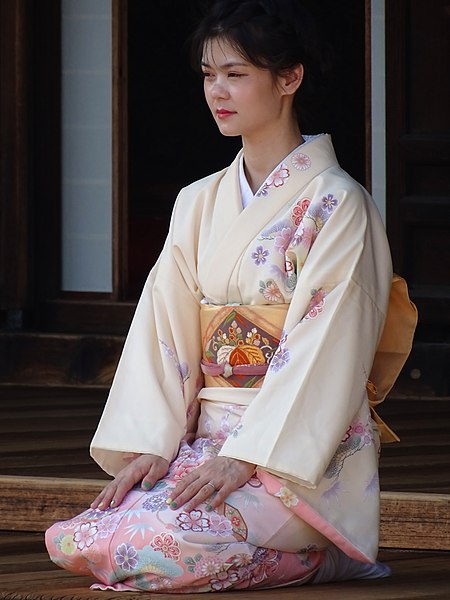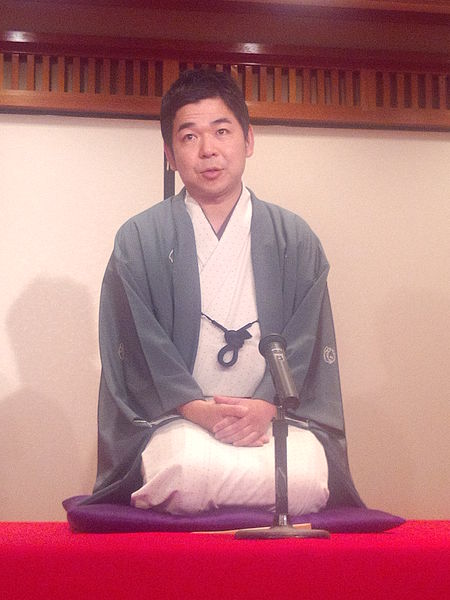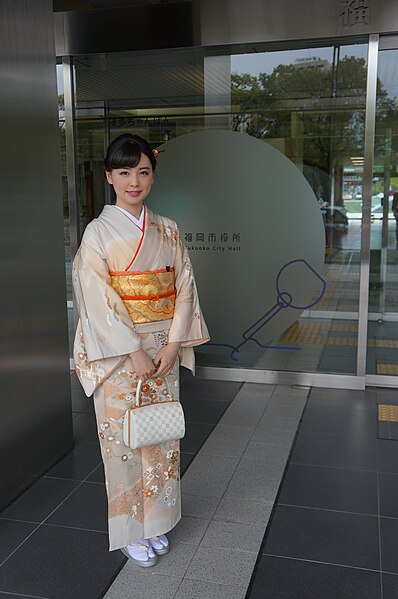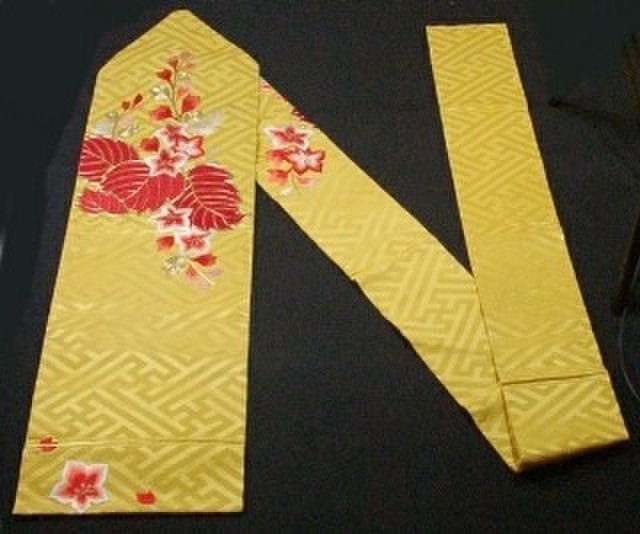The kimono is a traditional Japanese garment and the national dress of Japan. The kimono is a wrapped-front garment with square sleeves and a rectangular body, and is worn left side wrapped over right, unless the wearer is deceased. The kimono is traditionally worn with a broad sash, called an obi, and is commonly worn with accessories such as zōri sandals and tabi socks.
A Zen temple-goer wearing a formal cherry-blossom-motif kimono
A rakugoka (storyteller) wearing kimono and 5-mon haori
A man and a woman wearing formal kimono, for a 1923 wedding (other views)
Woman in kimono at Fukuoka City Hall
An obi is a belt of varying size and shape worn with both traditional Japanese clothing and uniforms for Japanese martial arts styles. Originating as a simple thin belt in Heian period Japan, the obi developed over time into a belt with a number of different varieties, with a number of different sizes and proportions, lengths, and methods of tying. The obi, which once did not differ significantly in appearance between men and women, also developed into a greater variety of styles for women than for men.
Back of a woman wearing a kimono with the obi tied in the tateya musubi style
A Japanese woman tying the obi of a geisha in the 1890s.
The nagoya obi, the most common variety of women's obi
The separate bow part of a tsuke obi is attached using a wire hook.








